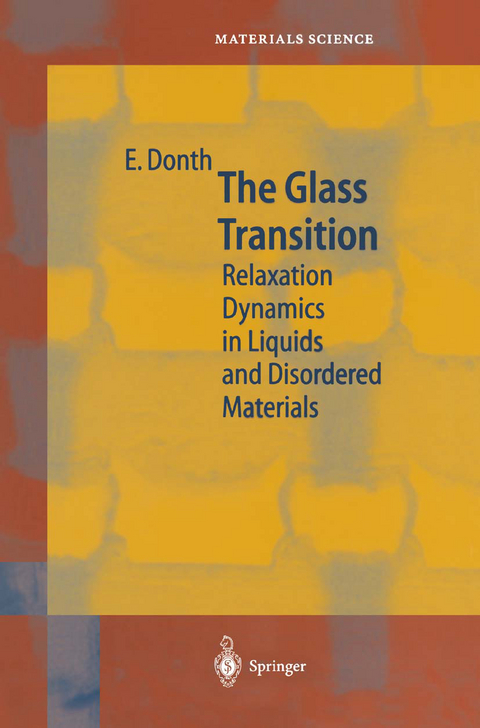
The Glass Transition
Springer Berlin (Verlag)
978-3-642-07519-3 (ISBN)
1. Introduction.- 2. Description of the Phenomenon.- 3. Theoretical Framework.- 4. Slowing Down Mechanisms.- 5. Epilogue.- 6. Conclusion.- A. Synonyms.- B. List of New Concepts.- C. Acronyms.- References.
From the reviews of the first edition:
"A welcome addition to the literature on a subject that is currently attracting a very heavy research interest... the author means the entire process of viscous slowdown and vitrification... he may well be the best-read author in this field. I found information that was new and interesting to me in nearly every section. There seems to be no element of the subject on which Donth has not read widely and deeply. [His] use of figures, backed up by appropriate text, can be an effective way of conveying a lot of information about (and insight into) the system behavior... This book is an excellent choice of reading material for someone newly entering the field, who wants to be made aware of its elements. It also provides much food for thought for the experts." PHYSICS TODAY (Dec. 2002)
"The glass transition is one of the most challenging tasks waiting for its explanation and understanding. ... This excellent book is simply a must not only for scientists working in the glass transition, but also important for material scientists, engineers. Its concept also makes the book to stand as a textbook for advanced or postgraduate students. Extensive referencing, general scope of the book ... make the book readable as a bestseller." (Ondrej Gedeon, Ceramics, Vol. 46 (1), 2002)
| Erscheint lt. Verlag | 1.12.2010 |
|---|---|
| Reihe/Serie | Springer Series in Materials Science |
| Zusatzinfo | XVII, 418 p. |
| Verlagsort | Berlin |
| Sprache | englisch |
| Maße | 155 x 235 mm |
| Gewicht | 658 g |
| Themenwelt | Naturwissenschaften ► Physik / Astronomie ► Atom- / Kern- / Molekularphysik |
| Naturwissenschaften ► Physik / Astronomie ► Festkörperphysik | |
| Technik ► Maschinenbau | |
| Schlagworte | Disordered materials • Dynamics • Dynamics of liquids • Glass • Glass state • Glass transition • liquid |
| ISBN-10 | 3-642-07519-3 / 3642075193 |
| ISBN-13 | 978-3-642-07519-3 / 9783642075193 |
| Zustand | Neuware |
| Informationen gemäß Produktsicherheitsverordnung (GPSR) | |
| Haben Sie eine Frage zum Produkt? |
aus dem Bereich


